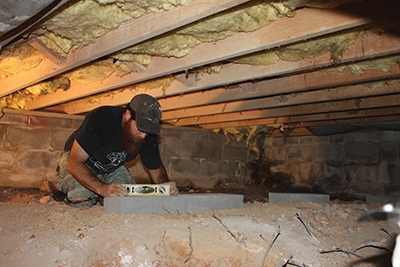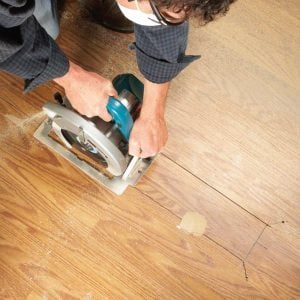Bracing Floor Joists For Tile

Add nails or screws if necessary.
Bracing floor joists for tile. For the best results install the blocks in a straight line between each joist running from. Joist span and spacing is set by your local building code. Bracing will stiffen a floor system prevent floor joists from twisting and increase overall stability however there are actually two types of floor joist bracing commonly used. Even if your joists already have a row of bridging at the center of the span adding a row on each side of the existing bridging will stiffen the floor.
Uncoupling membranes aren t recommended for tiles smaller than 2 inches square and should not be used when covering old hardwood flooring due to adhesion problems. Floor joist bridging is critical to the structural strength of a floor as shown in figure 1. For example if the floor contains two by ten joists the blocks should be cut from two by ten lumber. Floor joists installed on second or third or higher levels double as ceiling joists for the level below.
As a footstep falls on one joist some of the force is transferred to neighboring joists. Cross bracing and solid blocking. Depending upon the conditions it is possible to strengthen or repair existing framing members such as floor joists or roof rafters by adding reinforcing material sandwiching the member on either side with plywood is sometimes worthwhile but the plywood must be installed correctly for greatest strength. Start by making sure the original bridging is tightly fastened.
The catch of course is that the bouncy floor joists must be accessible from below. While most residential construction uses 2x8 joists with 16 inch spacing there are many other factors you need to consider when determining the proper joist span length. Yet it is not uncommon to find bridging not properly installed or missing all together. Whether your home is new or old it is sometimes necessary to install floor joist bracing in order to eliminate squeaking and deflection in the flooring itself.
Proper bridging distributes the load on the floor to other joists and over time prevents floors from sagging and squeaking do to floor joists twisting and warping. Divide the span by three and add rows of bridging at both of the. Residential building code requires the use of cross bracing or blocking for floor joists exceeding 2 inches by 12 inches but many homes especially older ones have. How to brace your floor studs.
A 3 4 inch plywood subfloor on a joist structure with 24 inch spacing needs the extra thickness of cementboard or the floor will flex and the tiles will crack. Then measure the span of the joists the distance between walls or beams that support the joists. In the past 2x4s or 2x6s were sometimes used as floor joists. In buildings with basements the first level of floor joists serves the same purpose.
This size is no longer acceptable when framing a structure.



















